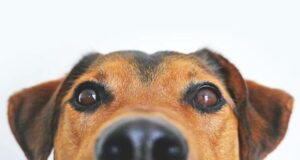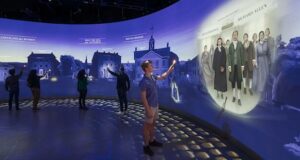For many passengers on a plane, sitting on the runway, the temperature can become stifling. You instinctively reach for the air knob above your head only to find there is no air coming out.
Sometimes those instances become dangerous.
In June 2017, a 4-month-old baby was rushed to the hospital suffering from heat-related symptoms following more than two hours aboard an increasingly hot United Airlines plane on the tarmac at Denver International Airport.
The child recovered, but the incident represents a worst-case scenario of the sometimes extreme temperatures that can overtake an aircraft on a hot summer’s day, creating a cabin environment that can run from uncomfortable to potentially unsafe.
“Today there are no [federal] temperature standards that exist. Oftentimes, in a list of safety requirements, this becomes the last priority,” said Sara Nelson, international president of the Association of Flight Attendants-AFA, which represents some 50,000 flight attendants working for 20 different airlines. “Even when airlines have their own internal policies about heating and cooling aircraft … there’s not going to be a full solution here until there’s a standard that everyone will have to meet.”
Starting this month, thousands of flight attendants at airlines around the country will be carrying thermometers to document instances of extreme temperatures, whether hot or cold, encountered during their shifts.
The data collected will be used to further bolster the push by two of the industry’s largest flight attendant unions to get the federal government to put standards in place for cabin temperatures, with a recommended range of 65 to 75 degrees Fahrenheit.
If approved, the rules could make temperature checks part of the standard preflight checklist, with passengers prevented from boarding planes unless the proper conditions are met.
On Wednesday, the AFA along with Transport Workers Union Local 556, which represents Southwest flight attendants, announced the launch of a smartphone app that flight crews and passengers can use to document extreme temperatures.
“It leads to fatigue for flight attendants. … It can create incredible discomfort for customers,” said Lyn Montgomery, president of the Southwest flight attendants union.
Airlines have a number of tools to keep aircraft cool while on the ground, including auxiliary power units that drive the plane’s air conditioning systems and the use of preconditioned air pumped onto the plane. Passengers are also often advised to put down their shades and open their air vents when exiting a plane to help keep things cool.
American Airlines said it won’t board an aircraft if the cabin temperature is above 90 degrees which isn’t much comfort for passengers. And, while Southwest doesn’t have a set limit, a spokesman said employees are empowered to make decisions whether the temperature is acceptable for boarding.
Representatives for both airlines said monitoring and addressing aircraft temperatures is a team effort, with pilots, flight attendants, gate agents, dispatchers and ground crews all playing a role.
Montgomery, who represents Southwest flight attendants, said the carrier has a process in place to report high cabin temperatures, but flight crews still sometimes resort to wearing cooling scarves or plugging portable fans into their smartphones.
It doesn’t take long for a plane, especially smaller models, to heat up on the hottest of days, Nelson said, and the typical process can break down for any number of reasons — equipment might malfunction, the proper staff aren’t in place, or the plane has simply been sitting exposed to the sun for several hours before re-entering service after a maintenance hangar visit.
The AFA filed a formal petition with the Department of Transportation in July recommending the target temperature range be set at 65 to 75 degrees Fahrenheit, with a maximum allowed temperature of 80 degrees. On aircraft with heat-generating seatback entertainment systems, the recommended maximum would be 85 degrees.
–wire services
 Metro Voice News Celebrating Faith, Family & Community
Metro Voice News Celebrating Faith, Family & Community 







